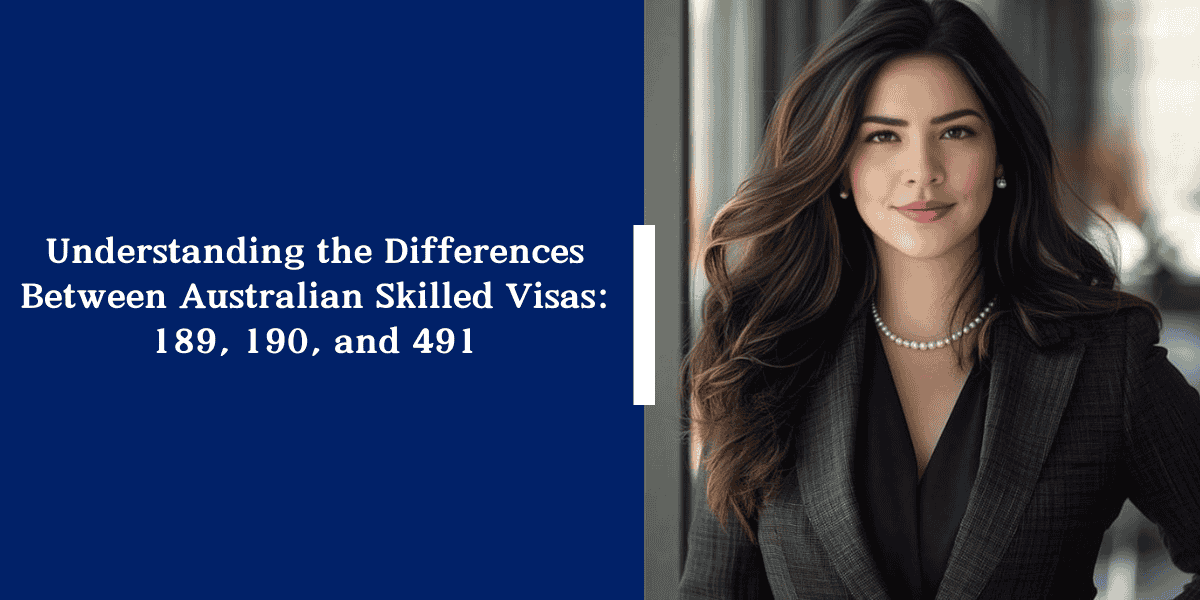
Australia offers several skilled migration visas designed to attract talented individuals who can contribute to the country's economy. Three of the most common are the Skilled Independent visa (subclass 189), the Skilled Nominated visa (subclass 190), and the Skilled Work Regional (Provisional) visa (subclass 491).
While all three pathways lead to permanent residency, they have some key differences:
1. Skilled Independent visa (subclass 189)
- Independence: This visa is truly independent, meaning you don't need sponsorship from an employer or nomination from a state or territory government.
- Flexibility: You have the freedom to live and work anywhere in Australia.
- Eligibility: To be eligible, your occupation must be on the Medium and Long-term Strategic Skills List (MLTSSL). You must also meet other criteria like age, English language proficiency, and a positive skills assessment.
- Application Process: You'll need to submit an Expression of Interest (EOI) through SkillSelect, and if you receive an invitation, you can then apply for the visa.
2. Skilled Nominated visa (subclass 190)
- Nomination: This visa requires nomination from an Australian state or territory government.
- State/Territory Focus: While you can eventually live and work anywhere in Australia, you'll typically need to live and work in the nominating state or territory for a certain period (usually two years) after your visa is granted.
- Eligibility: Your occupation needs to be on the Combined List of Eligible Skilled Occupations, and the nominating state or territory must also have a demand for your skills. You'll need to meet their specific requirements in addition to the general visa criteria.
- Application Process: You'll first need to apply for state/territory nomination and then submit an EOI through SkillSelect. If you receive a nomination and an invitation, you can apply for the visa.
3. Skilled Work Regional (Provisional) visa (subclass 491)
- Regional Focus: This visa is designed to address skills shortages in specific regional areas of Australia.
- Sponsorship/Nomination: You'll need either sponsorship from an eligible family member living in a designated regional area or nomination from a state or territory government.
- Regional Living: You must live and work in a designated regional area for a minimum of three years to be eligible for permanent residency.
- Eligibility: Your occupation must be on the relevant skilled occupation list, and you must meet other criteria, including age, English language proficiency, and a positive skills assessment.
- Application Process: The process involves obtaining sponsorship/nomination, submitting an EOI, and then applying for the visa if invited.
Key Differences Summarized
| Feature | Skilled Independent visa (189) | Skilled Nominated visa (190) | Skilled Work Regional (Provisional) visa (491) |
|---|---|---|---|
| Sponsorship/Nomination | Not required | Required by state/territory | Required by family or state/territory |
| Location | Anywhere in Australia | Initially in nominating state/territory | Designated regional areas |
| Occupation List | MLTSSL | Combined List | Relevant skilled occupation list |
Choosing the Right Visa
The best visa for you depends on your individual circumstances, skills, and preferences. Consider factors like:
- Your occupation and its demand in different parts of Australia
- Your willingness to live and work in a specific state/territory or regional area
- Whether you have a family member who can sponsor you in a regional area
It's recommended to research thoroughly and potentially consult with a registered migration agent to determine the most suitable visa pathway for your situation.


